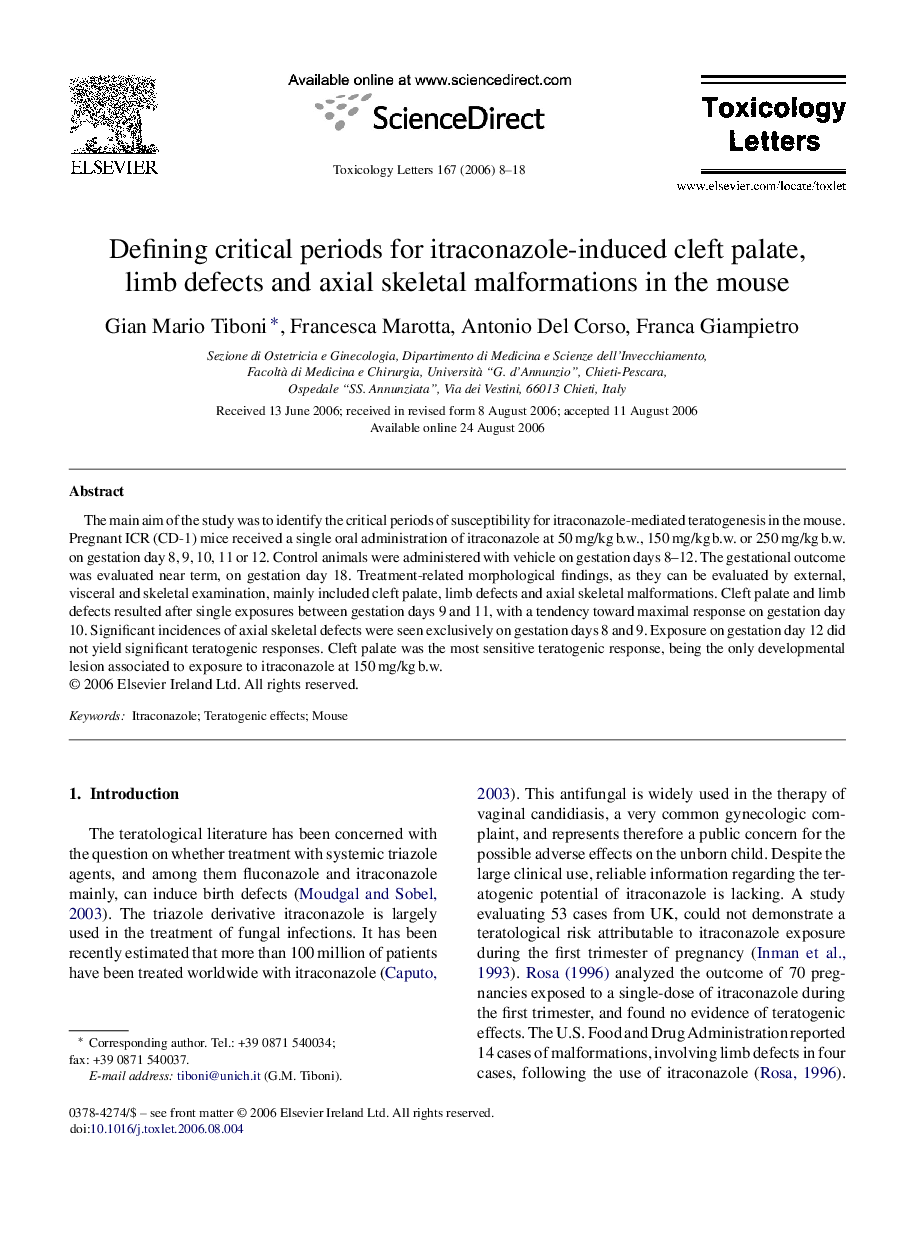| Article ID | Journal | Published Year | Pages | File Type |
|---|---|---|---|---|
| 2601125 | Toxicology Letters | 2006 | 11 Pages |
Abstract
The main aim of the study was to identify the critical periods of susceptibility for itraconazole-mediated teratogenesis in the mouse. Pregnant ICR (CD-1) mice received a single oral administration of itraconazole at 50 mg/kg b.w., 150 mg/kg b.w. or 250 mg/kg b.w. on gestation day 8, 9, 10, 11 or 12. Control animals were administered with vehicle on gestation days 8-12. The gestational outcome was evaluated near term, on gestation day 18. Treatment-related morphological findings, as they can be evaluated by external, visceral and skeletal examination, mainly included cleft palate, limb defects and axial skeletal malformations. Cleft palate and limb defects resulted after single exposures between gestation days 9 and 11, with a tendency toward maximal response on gestation day 10. Significant incidences of axial skeletal defects were seen exclusively on gestation days 8 and 9. Exposure on gestation day 12 did not yield significant teratogenic responses. Cleft palate was the most sensitive teratogenic response, being the only developmental lesion associated to exposure to itraconazole at 150 mg/kg b.w.
Keywords
Related Topics
Life Sciences
Environmental Science
Health, Toxicology and Mutagenesis
Authors
Gian Mario Tiboni, Francesca Marotta, Antonio Del Corso, Franca Giampietro,
